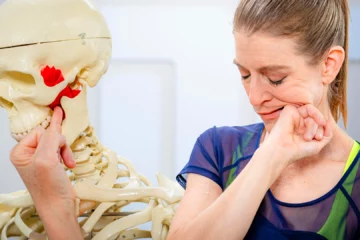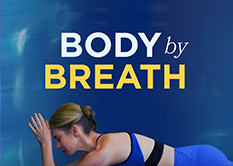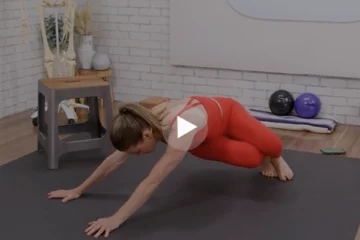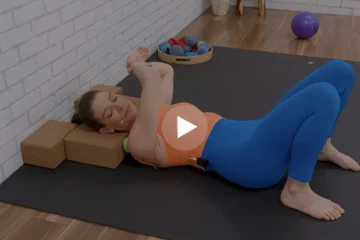
Am I alone in feeling inundated by Instagram yoga photo contests? From a marketing standpoint, I understand that people are drawn to visual stimuli and that pictures are a way of drawing more attention a business, but what are we actually doing? Recently, one of my local studios sponsored an Instagram contest. I found myself completely frustrated with contest poses and the lack of emphasis on healthy strength. Each pose only emphasized what looked good on the model or what would get the biggest ‘wow’ reaction. How is it that in this world of technology and innovation, imagination in how yoga can be expressed for the individual is still lacking?

Around the same time, I was reading Carl Paoli’s book, Free+Style, and within the first chapter he told his story of limitation. While growing up, he jumped from sport to sport because he felt limited by duplication. After he mastered a skill set, he quickly became bored and would find something new to throw his energy into. If imitation is limitation that causes students to eventually walk away from a yoga practice, what is the purpose of a contest that celebrates our copycat abilities?
The pictures I see of ultra skinny, overly flexible people and their potentially injurious poses on my Instagram feed make me feel inadequate, and I’m sure that I’m not alone. I can’t touch the sole of my foot to the crown of my head (not that I’m saying I actually want to do this), but when it’s hawked online like something to attain and strive for, I can’t help but wonder who else feels inadequate or too embarrassed to come to a yoga class. In a world that already creates feelings of inadequacy, we should be retreating into our healthy, personalized yoga practice to learn self-acceptance and self-love – not to beat up on and break ourselves striving for the ‘goal’ of a pose. I don’t want my students hurting themselves or walking away from the practice all together because their imitation of a pose felt like a limitation to their practice.
I use my personal practice and teaching to express who I am as an individual; it is my art. The times that I have ‘borrowed’ sequences or cues from another teacher have felt restrictive to my own voice and I feel the same constraint when mimicking a posture.
In Yoga Tune Up®, we learn to discover blind spots and how they can be exposed within our own movement patterns and tissue abuse/misuse. But what are the blinds spots that are created from showing only the “pretty poses”? Are we also creating “blind thoughts” by only showing yoga as a bendy, super skinny practice? I think that these “blind thoughts” can lead students to believe that there is only one yoga, one goal, and one path.
Using social media to communicate with your students is one thing, but pictures of poses that are not appropriate can alienate potential yogis. Yoga is not one size fits all and I completely understand that not every teacher is appropriate for every student. I also know that some students will be drawn to teachers because of what they think they can achieve if they practice with them. But isn’t the purpose of yoga to increase the longevity and vitality of life? If the Western “go-get-‘em” spin on yoga is leading to injuries, how does this lead to that longevity and agility? All too often I see social media announcements and proclamations that if you just practice hard enough and with the ‘right’ teacher, you too will be nailing headstands, soaring in crow, and folding into a blissful lotus. But practice isn’t the whole story – your bone structure and your tissues have a story to tell as well and perhaps they’re telling you that a complicated pose isn’t right for you.
I teach my students to live better in their bodies. I feel that living better in your body does not mean living with pain in the sacroiliac joint from overdoing a twist, tearing a biceps tendon from too many chaturangas, or straining the hamstring tendons because it’s necessary to stick your foot behind your head, all in the name of imitation. Living better in your body means embodying the practice individually; it means assessing the poses and using the practice to create healthy habits for everyday living.
Come back Friday for my tips on how I blend asana with YTU poses!
Join the YTU community on Facebook.











Even though I fully understand the whole show off and potentially dangerous aspect of crazy yoga Instagram posts, I enjoy looking at them just the same. I guess it’s just the highly visual nature of us as human beings. We developed such sharp aesthetics emotions, that at times they override reasoning voice of the mind. And it’s totally fine as long as you take them for what they are – minuscule parts of the massive yoga body, relative to few, unattainable for the majority.
I recently had a discussion with a woman about Instagram famous yoginis. This woman told me how inspiring certain Instagram celebrities are to her. While I agreed with her, I mentioned that my personal goal is not to get into these super cool Instagram worthy poses. I went on to explain that flexibility without stability or strength is not necessarily healthy or worth striving for. The sad thing is that moving well and living better in your body is not as sexy as seeing a pretty young person with incredible levels of flexibility. Glenda, I love the quote you ended your comment with. “Let’s keep inspiring people to stay connected to themselves rather than to the images on their phones.”
You have totally echoed my thoughts about instagram yoga poses. As much as the poses are beautiful, it makes me (sometimes) feel that I have to be able to do this or that pose, in order to be legit yoga teacher, because all these other yoga teachers or students are doing them. But less is more and simple is harder than most people think it is. 🙂
I enjoyed this article for two reasons. 1) It brings in the point of teacher-student relationship being absent. 2)I use to post to those “challenges” to stay in touch with a friend half a world away. When I started the challenges I brought them to my teacher at the time and we would discuss each pose, and sometimes scratch our heads and sometimes laugh at trying. At that point I had been studying with her for two years and had been practicing for 15yrs. My friend and I would discuss the poses offered and modify or try our best. It helped deepen these relationships, which I was grateful for. I dropped off of challenges when I couldn’t reconcile the asana with the extremes, and where some wrote amazing comments, the connection didn’t hold space for me.
This is something that is starting to become more of an issue in my own very small but growing yoga community and this article does a great job of explaining some of the challenges of this very visual approach to documenting practice in an attempt to inspire. Instagram has also become one of the best places to find yoga diversity online and to actually see differently built, differently abled, not always glamourous, regular people actually doing yoga which is wonderful.
Word up! I am SO not your typical bendy yoga coach. At. All. I used to feel jealous of all the super cool twisty bendy poses in pictures, that I just can’t (and won’t ever be able to) do.
But i’m happy to report that I don’t get those feelings any more. =)
I totally get where you are coming from, and I truly believe that a lot of people probably do see these poses on social media and either get hurt, or frustrated and quit, or any number of negative reactions. That being said, I also see people being inspired by the accomplishments of others, especially when they post pictures of the progress, not just the success. I am aware of enough of my current limitations to know when a pose may not be right for me, but as someone who still feels like a novice after years of practice, I get great inspiration from seeing what others have achieved. It is a double edged sword for sure, but I don’t think a total abandonment of sharing is right for everyone either. Thanks for giving me some new things to consider, and certainly insight into how careful I need to be about what I share if I decide to start sharing myself.
Ooh I love and agree with everything you have to say in this post! I’l try to respond in a short-ish reply. 1. Imitation is Limitation:Absolutely, and we can deeply injure ourselves for trying to force a posture that we’re not properly warmed up for, or might just not be right for our bodies at that time. 2. Feelings of Inadequacy: Totally. I also feel that as consumers of social media it is important to view the media through the lens of “this is not real life” to stay grounded and focused on your own practice and life without comparing oneself to others. LIke you say in your next post, it is just inspiration and beautiful fun to look at and admire the movements of others. 3. Blind Spots: One of the most CRUCIAL lessons I learned in my YTU training. The more we know about what we do not know the safer we can move in our bodies.
4. Yoga is your art. Absolutely, which is why it’s fun to share different shapes with the community, and never promising to have a student come out of one class mastering a posture. These things take time. Going to a yoga class, just like any other takes bravery to try something new. Each body makes it’s own art and it’s important to encourage students to feel at home in their bodies, especially if they are feeling alienated. 5. Living in your body for your individual practice. YES. Resounding yes. I always encourage my students to close their eyes and feel it in their bodies because the same pose looks different on every body, and not every body is fit for every pose. The yoga community can be supportive and fun, but at the end of the day your practice is yours and yours alone. Thank you for your well-articulated thoughts and support during training!
I get what you are saying, but for me i have only positive associations with yoga in social media. I follow a few select yogis and am often inspired by what they post, it makes me want to stop-drop-and-yoga. And when I occasionally (VERY infrequently) post myself in a tree or a handstand it is usually as an expression of how i feel at that moment (HAPPY!). i know you are talking about overly complicated poses and contests/challenges specifically, but just to balance the conversation re yoga in social media, maybe it’s not all bad.
Amen! I recently read a piece of advice to live by: just because you CAN do it, doesn’t mean you SHOULD do it. None of these fancy poses mean anything if you’re using your hyper mobile joints or flexibility to attain them-because that hypermobility is nothing without strength. This age of the selfie totally defies everything that yoga stands for which is self acceptance, kindness and awareness. It is NOT about a competition or creating an image that yoga is, essentially, gymnastics. Personally I find yoga selfies to be ego inflating-do you need someone to be impressed by what your body is capable of? Most likely it’s a lot more challenging, and rewarding, to sit and meditate for 20 minutes. How about a picture of that?!
I loved this! I actually subscribe to a million and one yogis, aerialist, and other insanely bendy people, because it makes me happy to see what the body is capable of, but I’m also a person whose overall physiology gravitates towards having strength, but being crazy tight. There’s so many things that I will never be able to access. I also have thighs and hips and a build that I rarely see represented in the media (in yoga or otherwise), so at one moment, it’s inspiring and in another, frustrating. I don’t mind seeing the amazing things that people do, but just like all things in life, there should be balance. I would like to see more depictions of the different body types that do this practice, because you are so right in the sense that, from the outside, it’s very exclusive.
Thank you for sharing. I agree that this is really a two sided sword, I know people who have started practising yoga because they are inspired and myself has been taken out of the comfort zone every now and again…feeling I need to step my practice up. I am still not comfortable enough to post pictures of myself in poses on my own website. But as a fat yogi, I hve watched in awe as people like Jessamyn Stanley pose in little clothing and do find it brave and liberating. Repeatetly seeing images of seemingly “imperfect” yogis might just change peoples’ perception over time and finally acknowledge the vast and wonderful array of cultures, bodies and personalities that one encounters in the world, also in the yoga world.
Thank-you for sharing this. I often find myself frustrated by the yoga community telling us to accept ourselves, and offering impossible images, or costumes for us to fit into. My sister refuses to go to many studios on the sole premise that they don’t sell clothes that fit her (so she must not be welcome). Likewise, if a studio’s instagram feed is filled with poses I’d never be able to do, I’d avoid attending class there for concern that I might feel embarrassed in a class where said posture is taught and I’m unable to access it. I hope more teachers and studios see this and adopt a more tune-up-esque philosophy.
I love this article. A share your frustrations with the visual representation of the “best” yoga pose. I have not been practicing for long and I am late to the game in my 50’s. I appreciate the many positive changes I have realized in my body. I very quickly learned to leave my ego at the door and to modify poses to support my body. There are so many safe and effective ways to “deepen” or enhance the challenges of our practice that does not place the body at risk of injury. The photos on instagram should not be the goal for all people. Sometimes they should simply not be the goal for safety sake.
Thank you for this article. Very open and honest. I do absolutely agree. Even if i like beautiful pictures with the sole of the foot on the crown of the head, most of the poses i see on this pictures are done with wrong, with poor alignment and can lead to injuries.
Yes, yes, yes! A million times yes! I want to shout this article from the rooftops! Thank you! Live better in your body.
I love instagram and the visual array of amazing yogis to admire. I do to a point, agree with you and do see things I would never try or even work for in my practice. However is it, always not your discretion to work with any pose in your own body? I always stress the importance of looking for the edge without crossing it into pain or injury to my students. As in life we should not compare ourselves to others but always try to be a better version of ourselves. I feel inspired by the photos I see and always welcome ways to expand my practice.Thanks for your post. Namaste
I couldn’t agree more with RM. Some of the poses requires years if not a life of practicing. After taking YTP, I embrace the uniqueness and imperfections/perfection of each human body. Glamorous shots and superficial photos in social media can inspire on what or what not to attain in your yoga practice if you are truth to yourself.
I like sharing tips and videos as Gina said but only take the best of it. Being truth to yourself and learning to know your body with each practice is the most amazing gift you can attain.
As long as you understand that yoga is not only the practicing of asanas but the appreciation of body, mind and spirit connection, then you are in the journey to be a true Yogi!
As someone who hosts and participates in Instagram challenges, I have to say that I agree… to an extent. In my social circle, I have very few friends that do yoga – or even exercise. Instagram has been an amazing place where I have made virtual and traditional connections with friends and I never would have met these wonderful people without the application.
However, when I first started participating in the challenges, I tore my hamstring because the pose of the day was hanumanasana. Knowing that I could do it (after a hippy hamstring-y class), I did a brief warm up and “popped” into the pose – and my hamstring popped along with it. After that, I reevaluated my participation in the challenges and modified as needed. Now as a host to some challenges, I always stress to modify or change the pose completely if it is not serving you. It is not about the pose, rather the intention.
So, while the Instagram challenges are not traditional, we have to accept that everything is evolving and changing – change is the only thing in life that is constant. Virtual yoga is a new norm and it probably won’t go away; however, people are interested in learning about alignment. I feel that the yoga community on Instagram would be receptive to an alignment challenge. if you have prizes and the right hashtags, you will have participants. You can educate and help people from injuring themselves using the disguise of a challenge, or you can ignore it and miss out on an opportunity to help others.
This is so timely. I, too, have felt inundated with yogi glamour shots on Instagram, and have this uneasy feeling that it defeats the point of yoga in the first place. Aren’t we supposed to be humble? And through YTP, I’ve learned that everyone’s body is different, that people’s bones and muscles come in different shapes and sizes. Some people will never be able to do certain poses, and they’re not supposed to. Glorifying some hard-to-achieve pose on social media could send the wrong message. Thank you for writing this.
“Pictures of poses that are not appropriate can alienate potential yogis”.
Apart from negating any self-actualizing process, such photos also overlook the beautiful state of being a beginner. No one (except maybe former gymnasts and dancers) begins the process of yoga standing on their heads or in perfect hanumanasana. These photos show only the “advanced”/”apex” asana as destination, negating the process of being a beginner which is such an open and awesome space to be in, filled with curiosity and wonder. I remember when I (a former gymnast) could not do caturanga for a year and felt so excited when I managed to bend my elbows for 1 inch and could feel my triceps working! The ubiquity of ego-stroking instagram poses does not foster the beginner’s mind and can indeed alienate people from yoga. The best teachers to me are those who teach beginners and who can inspire them, as they move along their journey, to keep cultivating the beginner’s mind.
I’ve thought about the same thing. Sad that what sometimes brings people to yoga is an image of a pose that could be harmful. However, I have found with my own students that once they are hooked, it’s what feels good in their bodies and where they start to see a benefit that keeps them coming back.
I came to comment but see that Jared above has managed to basically capture my thoughts. On a side note, I wanted to add that what I really hate about these Instagram photos are the people (like a friend of mine) who post the photos to get a perceived image of themselves out in the world when they really are not into yoga (or whatever the hot Instagram challenge is).
I had a similar pause and reflection, as I think many yogis do, and wrote about it here: https://intelligent-yoga.squarespace.com/journal/2014/7/28/why-i-wont-stopdropandyoga-or-yogaeverydamnday
In the event you’re looking for a similar and slightly different take.
Convincing students to learn the subtler elements of yoga and embrace the less-than-perfect reality is likely only to happen in a closer student-teacher relationship. Few students realize there’s something they may be missing until they do a transformative workshop, YTT, or embark on a journey with a teacher. The workshops that offer philosophy or “basics” of yoga are sparsely attended… handstand workshops sell out.
Great post! I’ve been following the YTU posts for a while now. I love therapeutic work but I miss the vinyasa part of my practice. I can’t wait to hear about potential ways to meld the two together!!!
Yes! This article is totally about me! =) I like participating in these Instagram challenges. I find them fun, especially when I do partner yoga, and it ties me to the greater community. Recently, I’ve been posting honestly about the limitations of my body and my most recent posts have been hash tagged #selflove. It wasn’t until YTU Level 1 training that I realized that 1)Downward Dog Pose was bad for my shoulders 2)I am a rib flarer when I take photos or even in some of my yoga poses 3)My right QL is locked up, even though I feel pain in my left lower back. …I’ve been taking yoga classes on and off for twelve years, and I even recently got 200-hour yoga teacher certified, and no teacher or fellow yogi has told me any of these things. Yoga is a difficult practice. It takes intelligent people, maybe with MRI vision, to bring all of that to light. I am definitely going to change my yoga practice and yoga teaching. I’d like to make it a point to become more aware of my body, and I also no longer feel upset that I can’t do a certain pose that I think is awesome on Instagram. I choose to honor my body now so that it will honor me later! =) And I’m really happy about that! Thanks for sharing!
Like you, I want students to live better in their bodies, not just look good on camera. In my yoga classes, we don’t do “big poses”, we take time for introspection and integration, and sweat isn’t pooling around mats at the end of class. My students look and feel good as they walk into the classroom and also when they leave. That their practice allows them to live better daily – doing all the other activities they love or need to do – is why I teach. Let’s keep inspiring people to stay connected to themselves rather than to the images on their phones.
The instagram phenomenon you are referring to is reflective of people focused on a destination versus any sort of “self-actualizing” process. The underlying issue is that most people dont have an understanding or appreciation for biomechanically sound movement and the skill acquisition that must accompany the execution of biomechanically sound movement. As carl says, learn to move, so you can move to learn. The “poses of instagram” definitely do seem devoid of any learning process.